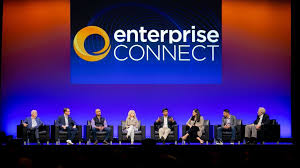6 things you need to know about rich communication services (RCS)

Time to read: 4 minutes
6 things you need to know about rich communication services (RCS)
Rich Communication Services (RCS) has arrived, and if you haven’t heard the news, it will transform your business-to-consumer text messaging. RCS Business Messaging is an advanced messaging protocol that allows businesses and consumers to exchange rich, interactive content, like high-quality photos, videos, buttons, and carousels.
We recently hosted a webinar with Twilio’s product experts to help you understand the RCS landscape, why it matters, and what you need to know to get started. Explore the key takeaways in this article, or watch the webinar recording for more information.
1. RCS is now available on iOS
RCS has been around since 2008 and has been available on Androids since 2015, but one major player has held out on adopting RCS: Apple. That is, until now. iOS 18 supports RCS for peer-to-peer messaging, while iOS 18.1 supports RCS Business Messaging. With 57% of the U.S. market currently using iOS, this is a game changer for RCS functionality.
It’s worth noting that only those who update their devices to iOS 18.1 on carriers that support RCS Business Messaging will be able to receive this message type. It takes about 8 months to reach 80% market penetration, and we’ll dig into carrier support for RCS availability in point five. Ultimately we will be at least halfway through 2025 before RCS Business Messaging adoption is in full swing.
2. Build trust with customers over text
One of the benefits of RCS is its ability to create branded messaging by giving businesses the opportunity to include their name, logo, tagline, and a verified badge next to every text sent.
Instead of getting texts from a random phone number about a package shipping or confirming an appointment from an unknown short code, RCS offers businesses a branded text messaging experience. Businesses will also receive a check mark from Google or their carrier that confirms the brand is verified and is a contact the user can trust.
One of the challenges that Twilio is currently working through with global carriers is how to verify senders at scale. In order to prevent fraudulent senders from impersonating branded senders, there is a robust onboarding process to validate logo ownership, brand name and domain, and the ownership of the brand.
3. Access more customer engagement metrics
With SMS, delivery confirmation isn’t the most reliable metric since it’s dependent upon the country, carrier, and channel. RCS, on the other hand, provides detailed delivery and read receipts. This allows businesses to understand not only when a customer receives your message but also when they read it.
Read receipts give businesses a much clearer view into the customer journey. By pairing RCS with Twilio link shorteners and link tracking, you can see the full customer journey, from a customer opening a message to then clicking through to your website or app.
With this data, you can analyze when and where users are falling out of your customer journey, see if they’re opening a message but not clicking on a link, and start testing elements that you’ve never been able to test before.
4. Increase interaction with rich content features
One of the most exciting rich features available with RCS is the quick reply buttons. Imagine that you receive a text message asking to confirm your appointment. Instead of replying “C” to confirm and hitting send, the customer receives a message that asks them to confirm their appointment alongside a “Yes” button that the customer can tap. Quick-reply buttons within WhatsApp have led to higher engagement and response rates. Twilio customer and online grocery company, NewTail, observed a 20% faster time to close orders when using buttons to confirm order delivery date and time.
The other features that create a much more interactive experience for your end users are carousels and rich cards. As seen in the examples below, this rich content enables businesses to include visuals like product catalogs with buttons that users can engage with directly in their messaging app. Paired with quick reply buttons, businesses can build automated flows that feel organically interactive to the user. Stay tuned for more updates from Twilio as we add rich content features to our offering.
5. RCS availability is expanding
RCS Business Messaging is not yet available among all countries or carriers, especially in the United States. This is the current carrier timeline for the major US carriers:
Verizon is supporting RCS Business Messages in Q4 of 2024
T-Mobile will provide beta access to RCS in Q4 of 2024 and general availability in the first half of 2025
AT&T will enable RCS messaging in the first half of 2025
Global availability varies with some countries, like Germany and Spain, offering full RCS coverage and other countries growing in availability in 2025. See our docs for the latest on Twilio RCS coverage.
6. You can use RCS Business Messaging today
RCS may not be available for every carrier and every country (yet), but that shouldn’t prevent you from using and exploring this new texting method. In fact, now is the perfect time to test RCS messaging and see what works well for your brand before it’s available across your entire customer base.
To use RCS with Twilio, first request access, then you can go through the RCS onboarding process and add a branded sender to your existing account. You can then select that you prefer to send via RCS and choose a fallback option for those who are unable to receive RCS messages. If sending via RCS is unavailable for certain users, Twilio will automatically fall back to SMS. In your logs, you can see what was sent as RCS vs. SMS.
Implement an RCS messaging strategy for your business
RCS messaging opens up exciting new methods of engaging customers. While it will take some time for it to be available across carriers worldwide, this supercharged communication method will transform the way businesses engage their customers via text.
To set yourself up for success when implementing RCS, consider the following tips:
Review your existing workflows: Start with what you currently have set up and evaluate where you can replace standard SMS with RCS features.
Leverage content templates: Learn to build rich content with Twilio’s easy-to-use Content Template Build.
Test your RCS messaging: Use data from read receipts and other engagement metrics to build out a comprehensive RCS strategy for your brand.
Learn more about using Twilio’s RCS business messaging to deliver branded text messages at scale.
Related Posts
Related Resources
Twilio Docs
From APIs to SDKs to sample apps
API reference documentation, SDKs, helper libraries, quickstarts, and tutorials for your language and platform.
Resource Center
The latest ebooks, industry reports, and webinars
Learn from customer engagement experts to improve your own communication.
Ahoy
Twilio's developer community hub
Best practices, code samples, and inspiration to build communications and digital engagement experiences.


